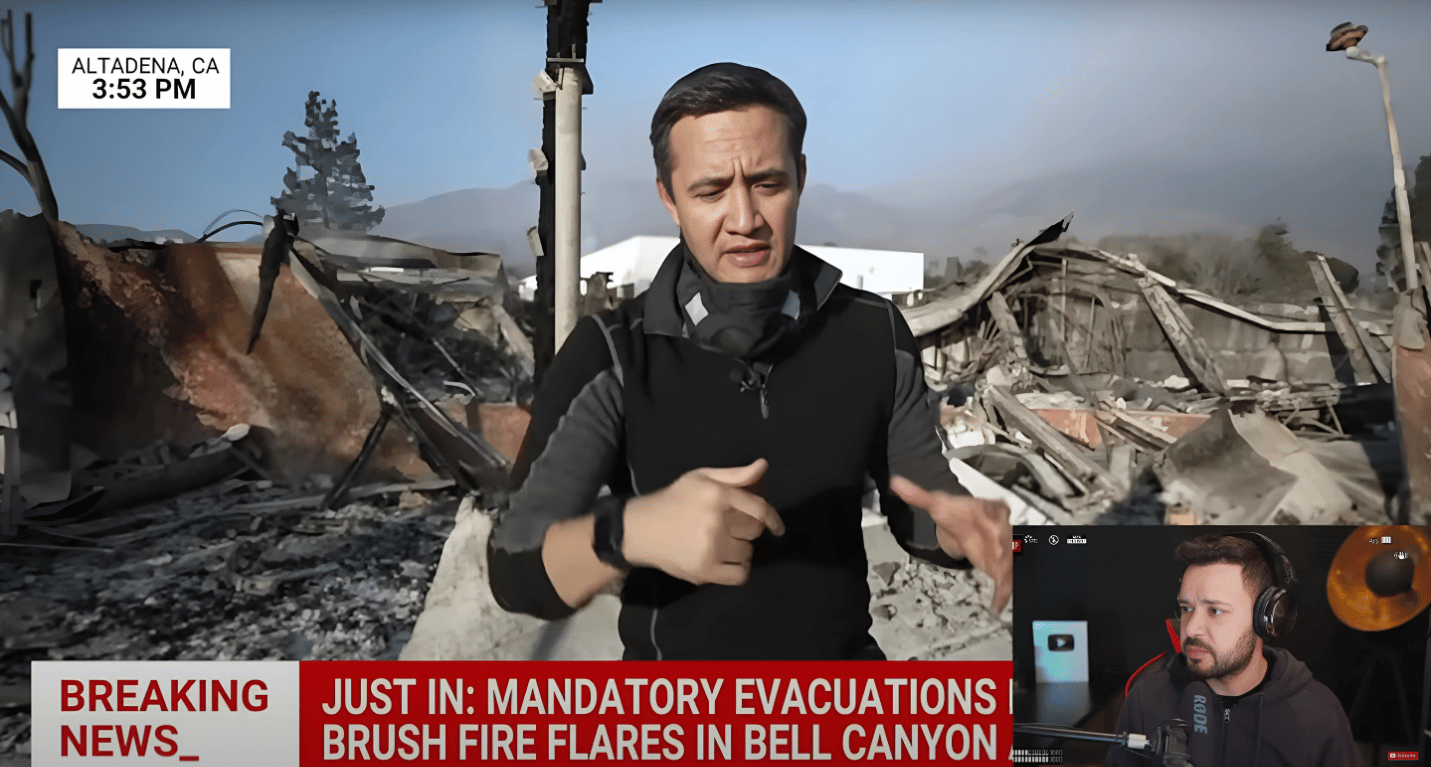As 2025 begins, California is once again under siege from catastrophic wildfires that have ravaged the Los Angeles area, displacing thousands and leaving behind a trail of destruction. The state’s ongoing wildfire crisis has prompted urgent evacuations, fierce debates over resource management, and heartbreaking losses for residents and communities.
The Fires in Focus
California is battling multiple active wildfires, each with unique challenges and devastating impacts:
- Palisades Fire: One of the most destructive, spanning over 27 miles and consuming more than 1,000 structures. Entire neighborhoods in Malibu and the Pacific Palisades have been left in ruins.
- Eaton Fire: This fire has scorched 10,600 acres and claimed several lives while threatening critical communication infrastructure on Mount Wilson.
- Bell Canyon Fire: Newly ignited, this blaze has prompted mandatory evacuations in Calabasas and threatens homes, highways, and air quality across the region.
With high winds, dry conditions, and overstretched resources, firefighters are facing significant challenges in containing these fires. Emergency services warn that worsening conditions could further escalate the crisis in the coming days.
A Human and Environmental Tragedy
The fires have displaced over 180,000 residents, with many returning to find their homes reduced to ashes. Families have lost not only their possessions but also the sense of security and stability that their communities once provided.
One particularly tragic story involves a family in Altadena, forced to evacuate their home of 51 years. In the chaos, neighbors and firefighters risked their lives to save animals and salvage what little they could, showcasing the resilience and compassion of affected communities.
Beyond the human toll, the environmental impact is severe. Smoke and ash have blanketed large portions of Southern California, leading to hazardous air quality and significant health concerns. Damage to critical infrastructure, including water systems and communication networks, complicates the recovery process.
Leadership Under Fire
California Governor Gavin Newsom and Los Angeles Mayor Karen Bass have faced sharp criticism for their handling of the crisis. Resource shortages, particularly the lack of adequate water pressure for firefighting, have sparked outrage. Former President Donald Trump has called for Newsom’s resignation, citing years of mismanagement and underinvestment in infrastructure as contributors to the state’s inability to respond effectively.
Newsom, in turn, has emphasized the challenges posed by climate change and the unprecedented scale of these fires. He has mobilized state resources, including water tank trucks and fire crews, and secured federal disaster assistance from President Joe Biden to aid the response.
Root Causes and Debates
While dry conditions, high winds, and climate change are widely recognized as contributing factors, speculation over human causes, including potential arson, has emerged. Social media platforms are rife with discussions about the origins of these fires, with terms like “eco-terrorism” gaining traction. However, investigations are ongoing, and no definitive causes have been confirmed.
The crisis has also reignited debates about California’s infrastructure. Experts point to chronic underinvestment in water systems and fire prevention measures, highlighting the need for long-term solutions to mitigate future risks.
A Long Road to Recovery
Recovery efforts are already underway, with FEMA and local agencies working to establish recovery centers for displaced residents. These centers aim to provide essential services, including access to FEMA benefits, insurance assistance, and temporary housing.
Still, rebuilding will take years, particularly for communities like the Pacific Palisades, which have been almost entirely destroyed. Early estimates place the cost of recovery at over $50 billion, a figure that may rise as the full scope of the damage becomes clear.
A Call for Preparedness
As California faces increasingly severe and frequent wildfires, the need for comprehensive planning and investment is more urgent than ever. Key priorities include:
- Infrastructure Upgrades: Strengthening water systems and communication networks to withstand future crises.
- Climate Adaptation: Developing strategies to address the root causes of extreme weather events.
- Community Support: Ensuring residents have access to resources and information during emergencies.
The 2025 wildfire season is a stark reminder of the challenges posed by climate change and the importance of proactive leadership. As California begins the arduous task of recovery, the resilience of its people and communities remains its greatest strength.
